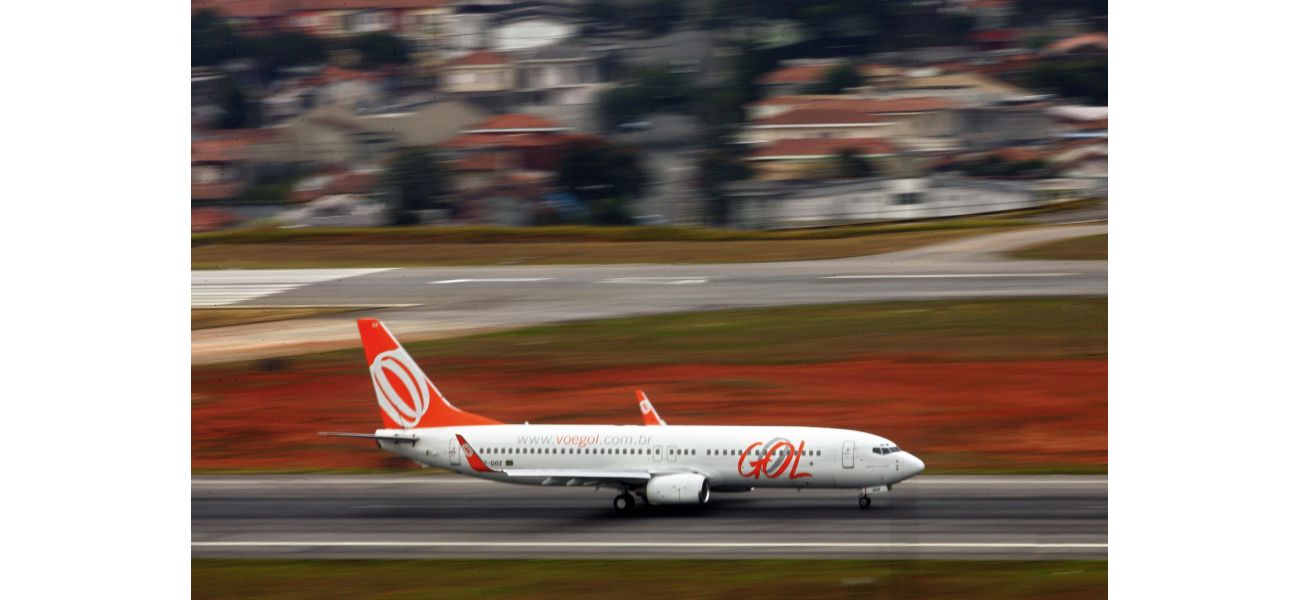A deadly plane crash in the Amazon led to Brazil's aviation crisis.
A major aviation crisis ensued in Brazil following the crash.
September 29th 2024.

There were no survivors after the Gol Transportes Boeing plane crashed into the vast and dense Amazon rainforest on September 29, 2006. The tragic event claimed the lives of all 154 people on board, including passengers and crew members. It was a devastating blow not only to their loved ones, but also to the entire Brazilian aviation industry.
The incident occurred when the Gol Transportes Boeing 737-800 passenger plane collided mid-air with an Embraer Legacy 600, operated by ExcelAire. While the seven people on board the smaller jet miraculously survived, the Boeing plane crashed into the rainforest with no chance of escape for those on board. The impact was so severe that the cockpit voice recorder was found two minutes after the collision, with the plane completely destroyed and scattered throughout the remote area.
The crash had a major impact on the Brazilian aviation industry, causing widespread flight delays, cancellations, and even strikes. It was a chaotic time for both passengers and employees, as the country was plunged into an aviation crisis and a blame game ensued. The tragedy also shed light on the safety measures and protocols within the industry, leading to a thorough investigation of the incident.
The Gol Airlines staff paid tribute to the victims a month after the crash, but the aftermath of the tragedy continued to haunt the industry. The collision of the two modern jets with anti-collision tools raised questions about the air traffic control and the efficiency of the aircraft's systems. The investigation revealed that the air traffic control and the Embraer jet had attempted to communicate with each other before the crash, but were unsuccessful. It was also discovered that the Embraer's collision avoidance system was not functioning properly.
The pilots of both jets, with years of experience and thousands of flight hours between them, were detained and the black boxes were removed for analysis. The findings pointed to errors on the part of the air traffic control and the pilots, including improper clearance for the aircraft and failure to spot the switched off transponder.
The crash sparked one of Brazil's biggest aviation crises, with air traffic staff feeling the immediate investigation was unfairly placing blame on them. Tensions were already high among controllers due to poor labor relations and outdated equipment. This led to walkouts, a hunger strike, and protests by victims' families. It took four long years for justice to be served, with two air traffic controllers being sentenced and four others being acquitted. The American pilots were also convicted, but their extradition to Brazil was denied by US authorities.
The tragedy not only highlighted flaws in the aviation industry, but also the importance of airplane safety in Brazil. Just a year before the Gol Transportes crash, another plane accident occurred in Sao Paulo, killing 187 people. The incident, along with the recent crash, raised concerns about the country's air traffic control system and the need for improvement.
The families of the victims faced a long and frustrating wait for justice, which was only partially served with the conviction of some of those responsible. The crash of the Gol Transportes plane changed the lives of many and brought attention to the flaws in the Brazilian aviation industry. It serves as a reminder of the importance of safety measures and protocols in the air travel industry, and the need for continuous improvement to prevent such tragedies from occurring again.
The incident occurred when the Gol Transportes Boeing 737-800 passenger plane collided mid-air with an Embraer Legacy 600, operated by ExcelAire. While the seven people on board the smaller jet miraculously survived, the Boeing plane crashed into the rainforest with no chance of escape for those on board. The impact was so severe that the cockpit voice recorder was found two minutes after the collision, with the plane completely destroyed and scattered throughout the remote area.
The crash had a major impact on the Brazilian aviation industry, causing widespread flight delays, cancellations, and even strikes. It was a chaotic time for both passengers and employees, as the country was plunged into an aviation crisis and a blame game ensued. The tragedy also shed light on the safety measures and protocols within the industry, leading to a thorough investigation of the incident.
The Gol Airlines staff paid tribute to the victims a month after the crash, but the aftermath of the tragedy continued to haunt the industry. The collision of the two modern jets with anti-collision tools raised questions about the air traffic control and the efficiency of the aircraft's systems. The investigation revealed that the air traffic control and the Embraer jet had attempted to communicate with each other before the crash, but were unsuccessful. It was also discovered that the Embraer's collision avoidance system was not functioning properly.
The pilots of both jets, with years of experience and thousands of flight hours between them, were detained and the black boxes were removed for analysis. The findings pointed to errors on the part of the air traffic control and the pilots, including improper clearance for the aircraft and failure to spot the switched off transponder.
The crash sparked one of Brazil's biggest aviation crises, with air traffic staff feeling the immediate investigation was unfairly placing blame on them. Tensions were already high among controllers due to poor labor relations and outdated equipment. This led to walkouts, a hunger strike, and protests by victims' families. It took four long years for justice to be served, with two air traffic controllers being sentenced and four others being acquitted. The American pilots were also convicted, but their extradition to Brazil was denied by US authorities.
The tragedy not only highlighted flaws in the aviation industry, but also the importance of airplane safety in Brazil. Just a year before the Gol Transportes crash, another plane accident occurred in Sao Paulo, killing 187 people. The incident, along with the recent crash, raised concerns about the country's air traffic control system and the need for improvement.
The families of the victims faced a long and frustrating wait for justice, which was only partially served with the conviction of some of those responsible. The crash of the Gol Transportes plane changed the lives of many and brought attention to the flaws in the Brazilian aviation industry. It serves as a reminder of the importance of safety measures and protocols in the air travel industry, and the need for continuous improvement to prevent such tragedies from occurring again.
[This article has been trending online recently and has been generated with AI. Your feed is customized.]
[Generative AI is experimental.]
0
0
Submit Comment





